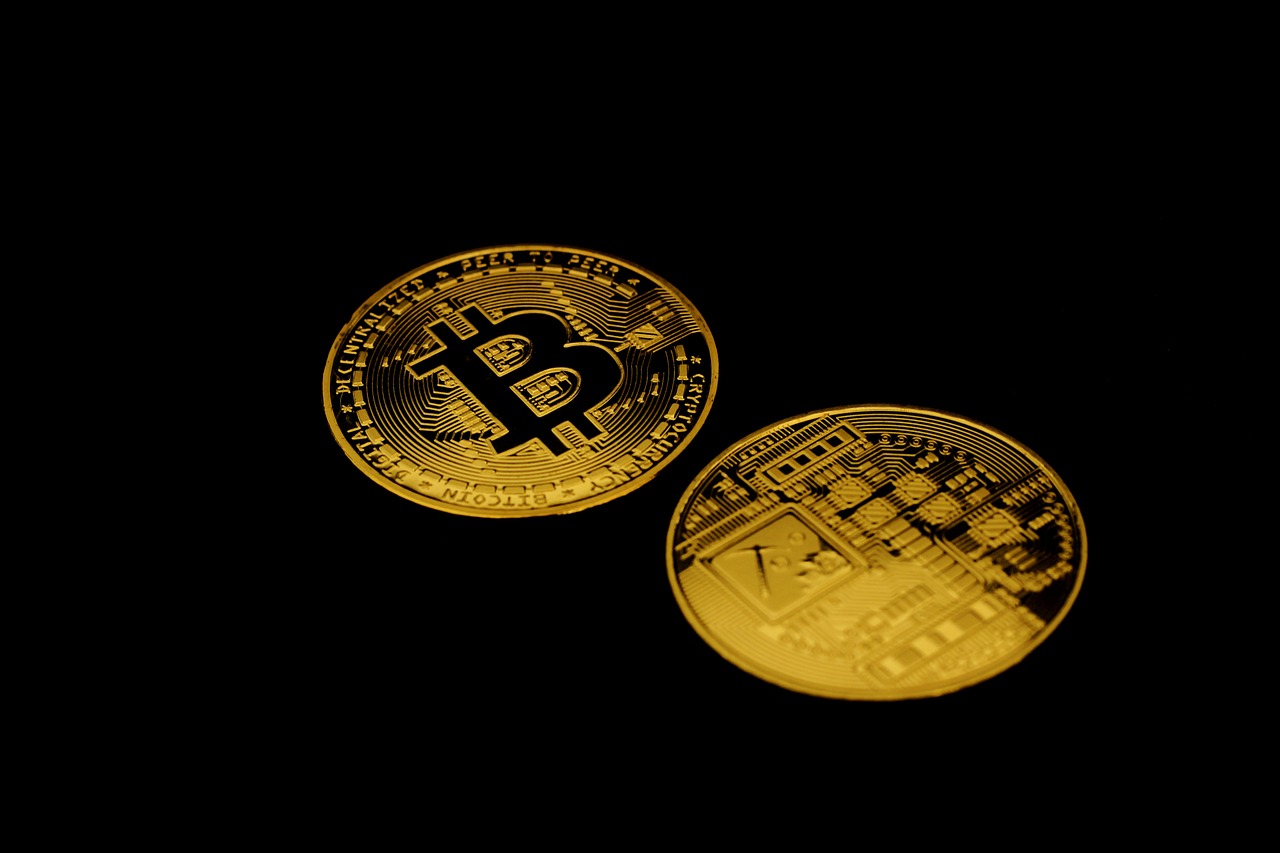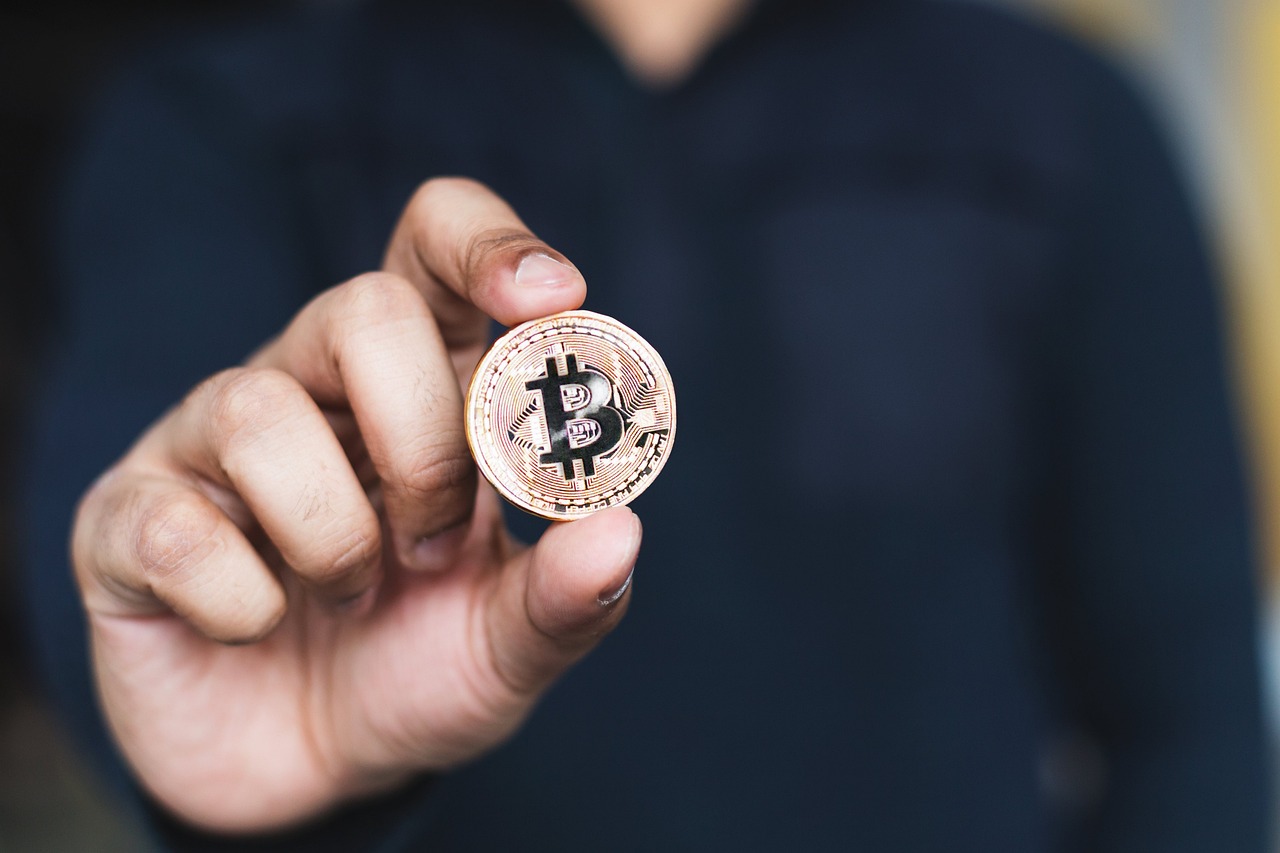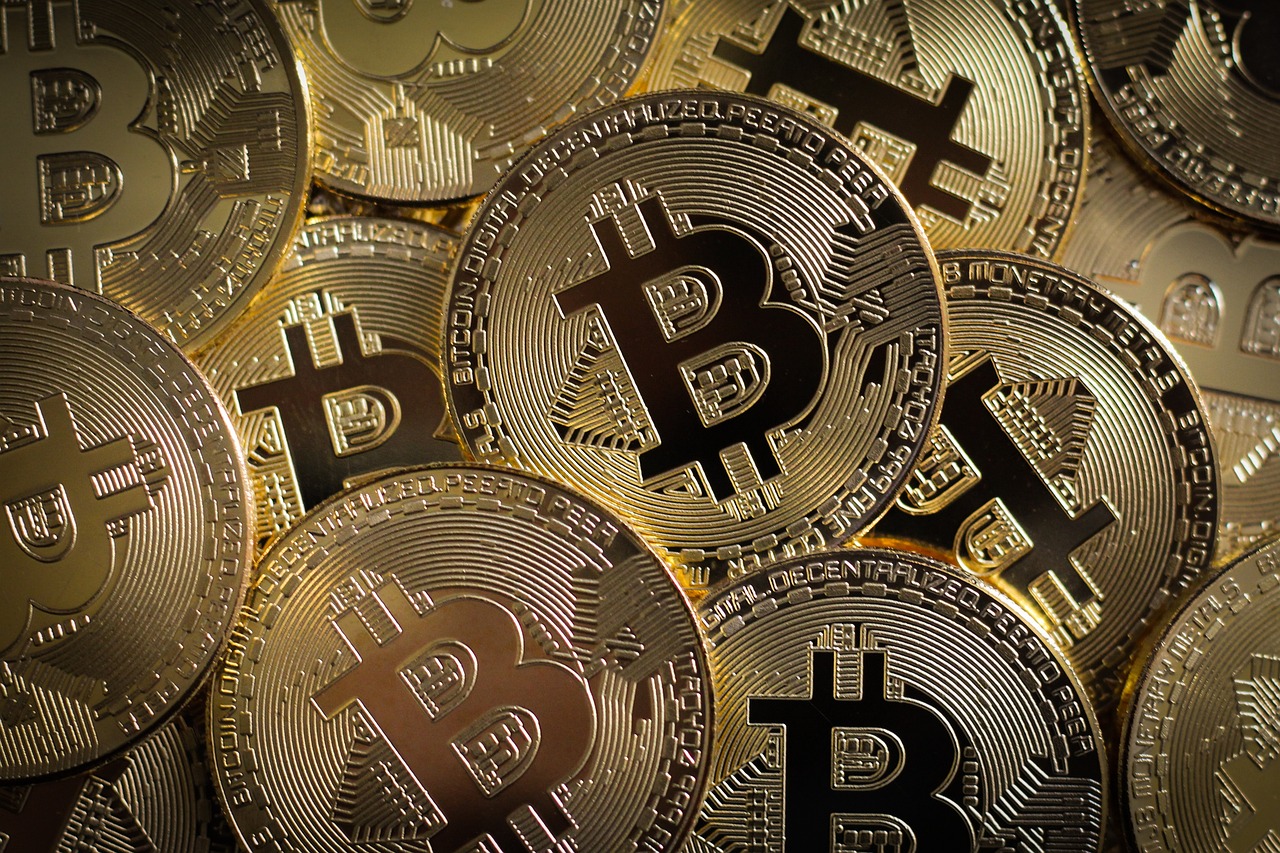Curve Finance - Stablecoin Liquidity Pool Overview
Welcome to the fascinating world of Curve Finance, where stablecoins and decentralized finance (DeFi) intersect to create a seamless trading experience! If you’ve ever wondered how these digital assets function and why they’re crucial in today’s financial landscape, you’re in the right place. Curve Finance specializes in stablecoin liquidity pools, which are designed to provide users with efficient trading options while minimizing risks. So, what makes these liquidity pools so special? Let’s dive in!
Stablecoins are essentially the bridge between traditional fiat currencies and the world of cryptocurrencies. They are designed to maintain a stable value, often pegged to assets like the US Dollar. Imagine having the best of both worlds: the security and stability of fiat combined with the innovative technology of blockchain! This is why stablecoins are a cornerstone in the DeFi ecosystem. They not only provide liquidity, making trading smoother, but they also help to reduce the volatility that often plagues other cryptocurrencies. In essence, stablecoins are like a safety net, allowing traders to navigate the often tumultuous waters of crypto markets.
Liquidity pools are the lifeblood of decentralized exchanges (DEXs). They allow users to trade assets without relying on traditional order books, which can be slow and cumbersome. Think of liquidity pools as a vast reservoir of funds that traders can tap into whenever they need. When you add your assets to a liquidity pool, you're contributing to this reservoir, enabling others to trade seamlessly. In return for your contribution, you earn potential rewards, creating a win-win situation for all parties involved. But how exactly do these pools operate?
When you deposit tokens into a liquidity pool, you’re essentially participating in a shared investment. Traders can access this pool to execute trades, and as they do, they generate trading fees. These fees are then distributed among liquidity providers based on their contribution to the pool. It’s like being part of a community garden: the more you contribute, the more you reap the benefits! However, it’s important to understand the risks involved, especially the concept of impermanent loss.
Impermanent loss is a term that every liquidity provider should familiarize themselves with. It occurs when the value of your deposited tokens changes compared to holding them separately. For instance, if you provide liquidity with a pair of tokens and one token appreciates significantly, you might end up with less value than if you had simply held onto the tokens. This isn’t to say that liquidity pools aren’t worth it; rather, it’s essential to understand this risk to make informed decisions.
So, how can you protect yourself from impermanent loss? Here are a few strategies:
- Choose Stablecoin Pairs: By providing liquidity with pairs of stablecoins, you can minimize the risk of impermanent loss since their values are more likely to remain stable.
- Diversify Investments: Spreading your assets across multiple pools can help reduce the overall risk.
- Use Liquidity Pool Management Tools: These tools can help you optimize your returns and manage risks effectively.
Curve Finance has carved out a niche in the DeFi space by specializing in stablecoin trading. It offers users low slippage and minimal fees, which is a game-changer for anyone looking to trade efficiently. The platform’s unique algorithm optimizes swaps between stablecoins, ensuring that users get the best rates possible. It’s like having a personal financial advisor, guiding you through the complexities of crypto trading!
Now, let’s talk about yield farming. This is where things get really exciting! Yield farming involves providing liquidity in exchange for rewards, often in the form of governance tokens. Curve Finance offers various opportunities for users to maximize their returns through different yield farming strategies. It’s akin to planting seeds in a garden: the more you nurture and care for them, the more bountiful your harvest!
When it comes to yield farming, selecting the appropriate liquidity pool is crucial for maximizing your yield. Users should consider factors such as pool performance, associated risks, and potential rewards. Just like choosing the right investment, it’s important to do your homework and make informed choices.
Curve Finance incentivizes liquidity providers through various mechanisms, including governance tokens, trading fees, and additional rewards from partner protocols. This enhances the overall earning potential for users, making Curve Finance a highly attractive option in the DeFi landscape.
What are stablecoins?
Stablecoins are cryptocurrencies designed to maintain a stable value, often pegged to fiat currencies like the US Dollar.
How do liquidity pools work?
Liquidity pools allow users to deposit tokens into a shared pool, which traders can access for trading. In return, liquidity providers earn fees based on the trading volume generated.
What is impermanent loss?
Impermanent loss occurs when the value of deposited tokens changes compared to holding them separately, which can lead to a loss in value for liquidity providers.
How can I mitigate impermanent loss?
You can mitigate impermanent loss by choosing stablecoin pairs, diversifying your investments, and using liquidity pool management tools.
What are the benefits of using Curve Finance?
Curve Finance offers low slippage, minimal fees, and a unique algorithm that optimizes swaps between stablecoins, making it an attractive option for users.

Understanding Stablecoins
Stablecoins are a fascinating innovation in the world of cryptocurrency, designed to maintain a stable value by pegging them to traditional fiat currencies like the US Dollar or the Euro. Imagine a digital dollar that you can send across the globe in seconds, with minimal fees and no volatility. This is precisely what stablecoins aim to achieve! They serve as a bridge between the traditional financial system and the burgeoning realm of decentralized finance (DeFi), providing a sense of security amidst the often turbulent waves of cryptocurrency trading.
In the dynamic landscape of DeFi, stablecoins play a crucial role by offering liquidity and reducing volatility. Unlike traditional cryptocurrencies that can experience wild price fluctuations, stablecoins are designed to remain stable. This stability makes them an attractive option for traders and investors who want to avoid the dramatic ups and downs of the crypto market. For instance, when the price of Bitcoin plummets, those holding stablecoins can maintain their purchasing power without needing to convert back to fiat currency.
There are various types of stablecoins, each with its unique mechanism for maintaining stability. Here’s a quick overview:
| Type of Stablecoin | Mechanism | Examples |
|---|---|---|
| Fiat-Collateralized | Backed 1:1 by fiat currency held in reserve | USDC, Tether (USDT) |
| Crypto-Collateralized | Backed by other cryptocurrencies, often over-collateralized | Dai |
| Algorithmic | Uses algorithms to control supply and demand | Ampleforth (AMPL) |
By providing a stable medium of exchange, stablecoins facilitate seamless trading and investment opportunities in the DeFi space. Users can enter and exit positions without worrying about sudden price swings that could erode their capital. This reliability is why stablecoins have become a favorite among traders looking to hedge against market volatility.
Moreover, stablecoins are often used in liquidity pools, where users can deposit their assets to earn interest or rewards. This creates a win-win situation: liquidity providers earn passive income while traders enjoy lower slippage and transaction costs. In essence, stablecoins are not just a tool for maintaining value; they are a vital component of the DeFi ecosystem, enabling efficient trading and yield generation.
In conclusion, understanding stablecoins is essential for anyone looking to navigate the complex waters of decentralized finance. They offer a stable, reliable, and efficient way to engage with cryptocurrencies, making them indispensable in today’s financial landscape. As the DeFi sector continues to grow, stablecoins will undoubtedly play a pivotal role in shaping its future.

The Role of Liquidity Pools
Liquidity pools are the unsung heroes of decentralized finance (DeFi), acting as the backbone of trading platforms. Imagine walking into a bustling marketplace where every vendor is ready to trade at a moment's notice. This is what liquidity pools provide for cryptocurrencies. By aggregating funds from multiple users, these pools ensure that there is always enough liquidity available for traders to execute their transactions without delay. This is particularly important in the volatile world of crypto, where prices can swing dramatically in a matter of seconds.
At their core, liquidity pools allow users to trade assets without needing traditional order books. In a typical exchange, buyers and sellers must find each other, which can lead to delays and inefficiencies. Liquidity pools eliminate this hassle by allowing users to deposit their tokens into a shared pool. When someone wants to make a trade, they simply tap into this pool, enabling instant transactions. This not only enhances the trading experience but also fosters a more dynamic market environment.
So, how do liquidity pools work in practice? When users add their tokens to a pool, they become liquidity providers. In return for their contribution, they earn a share of the trading fees generated by the pool. This creates a win-win situation: traders benefit from quick and efficient transactions, while liquidity providers receive rewards for their participation. It's like being part of a community garden where everyone contributes, and in return, everyone reaps the benefits.
However, it's important to note that participating in liquidity pools isn't without its risks. One of the main concerns for liquidity providers is something called impermanent loss. This occurs when the value of the tokens in the pool diverges from their value if held separately. For instance, if you deposit a stablecoin into a pool and its value suddenly drops, you may end up with less overall value than if you had just held onto the stablecoin. Understanding this risk is crucial for anyone looking to dive into the world of liquidity pools.
Despite the risks, the benefits of liquidity pools are undeniable. They not only facilitate seamless trading but also empower users to earn passive income through their contributions. By providing liquidity, users can tap into a new revenue stream while contributing to the overall health of the DeFi ecosystem. It's a fascinating interplay of risk and reward, and one that continues to evolve as the DeFi landscape matures.
In conclusion, liquidity pools are essential to the functioning of decentralized exchanges, offering a more efficient and user-friendly trading experience. As the DeFi space grows, understanding the role of these pools becomes increasingly important for anyone looking to navigate this exciting new frontier.
- What are liquidity pools? Liquidity pools are collections of funds deposited by users that facilitate trading on decentralized exchanges.
- How do I earn from liquidity pools? Users earn fees generated from trades made within the pool, proportional to their contribution.
- What is impermanent loss? Impermanent loss is the potential loss a liquidity provider may face when the value of their deposited assets changes compared to holding them separately.
- Can I withdraw my funds anytime? Yes, liquidity providers can typically withdraw their funds at any time, although there may be fees or waiting periods involved.

How Liquidity Pools Work
Liquidity pools are the backbone of decentralized exchanges, allowing users to trade assets seamlessly without the need for traditional order books. Imagine a large communal swimming pool where everyone can dive in and out at will; that’s how liquidity pools function in the crypto world. Users, known as liquidity providers, deposit their tokens into these pools, creating a shared resource that traders can access. This dynamic setup fosters a more efficient market, enabling swift trades and reducing the risk of slippage.
When you deposit your tokens into a liquidity pool, you’re not just parking your assets; you’re becoming an integral part of a larger ecosystem. In return for your contribution, liquidity providers earn a share of the trading fees generated by the pool. The more trades that occur, the more fees are collected, which translates into potential earnings for you. It’s like being a shareholder in a bustling marketplace where every transaction benefits you directly.
To give you a clearer picture, let’s break down how these pools operate:
| Step | Description |
|---|---|
| 1 | A user deposits tokens into the liquidity pool. |
| 2 | Traders access the pool to swap assets, utilizing the liquidity provided. |
| 3 | Trading fees are generated from these transactions. |
| 4 | Liquidity providers earn a portion of these fees based on their contribution to the pool. |
This system not only enhances trading efficiency but also democratizes access to liquidity. Instead of relying on a few large players to provide liquidity, anyone can participate. It’s a community-driven approach that encourages more people to engage in the DeFi space. However, it’s essential to understand that while liquidity pools offer exciting opportunities, they also come with risks, such as impermanent loss, which we’ll delve into later.
In summary, liquidity pools are a revolutionary concept in the decentralized finance landscape. They empower users to trade with ease while providing liquidity providers with a chance to earn passive income. It’s a win-win situation that showcases the innovative spirit of the crypto community.
- What are liquidity pools? Liquidity pools are collections of funds locked in a smart contract that facilitate trading on decentralized exchanges.
- How do I earn from liquidity pools? By providing tokens to a liquidity pool, you earn a share of the trading fees generated from transactions.
- What is impermanent loss? Impermanent loss occurs when the value of your deposited assets changes compared to holding them separately, potentially leading to lower returns.
- Can anyone participate in liquidity pools? Yes, anyone can contribute to liquidity pools and earn rewards, making it accessible to all.

Impermanent Loss Explained
So, let’s dive into the concept of impermanent loss. Imagine you’re a farmer, tending to a field of crops. You decide to plant two types of crops in equal measure, expecting to harvest them later. Now, think of your crops as tokens in a liquidity pool. When you deposit your tokens into a liquidity pool, you’re essentially locking them in to help facilitate trades. However, the tricky part comes when the value of those tokens fluctuates. If the price of one crop skyrockets while the other doesn’t, you might find that, upon harvesting, your total yield is less than if you had just kept your crops separately. This situation is what we call impermanent loss.
In the world of decentralized finance (DeFi), impermanent loss occurs when the value of your deposited tokens changes relative to holding them outside the liquidity pool. This can happen due to price volatility in the market. For instance, if you provide liquidity for a trading pair of stablecoins and one stablecoin maintains its peg while the other fluctuates, your overall value can diminish compared to simply holding those stablecoins in your wallet.
To illustrate this further, let’s look at a simple example. Suppose you deposit $1,000 worth of Stablecoin A and $1,000 worth of Stablecoin B into a liquidity pool. If Stablecoin A rises to $1,200 while Stablecoin B remains stable, the value of your total deposit might be less than if you had just held onto Stablecoin A. This difference is what constitutes impermanent loss.
Here’s a quick breakdown of how impermanent loss might affect your investments:
| Scenario | Value if Held | Value in Pool | Impermanent Loss |
|---|---|---|---|
| Stablecoin A rises 20% | $1,200 | $1,100 | $100 |
| Stablecoin B remains stable | $1,000 | $1,000 | $0 |
As you can see, the impermanent loss becomes evident when comparing the potential value of holding tokens versus providing them in a liquidity pool. It’s crucial for liquidity providers to understand this risk, as it can impact their overall returns. However, don’t let this discourage you! Many users still find liquidity pools to be a lucrative opportunity, especially when they adopt strategies to mitigate this risk.
In conclusion, while impermanent loss is a significant factor to consider when engaging in liquidity pools, understanding it can empower you to make better decisions. By staying informed and employing risk management strategies, you can navigate the DeFi landscape with more confidence.

Strategies to Mitigate Impermanent Loss
When it comes to participating in liquidity pools, impermanent loss is a significant concern for many liquidity providers. This phenomenon occurs when the price of your deposited assets changes compared to holding them separately. Fortunately, there are several strategies you can employ to minimize this risk and protect your investments. Understanding these strategies can be the difference between a successful liquidity provision experience and a frustrating one.
One of the most effective ways to mitigate impermanent loss is by choosing stablecoin pairs for your liquidity pools. Since stablecoins are designed to maintain a stable value, the price fluctuations that typically lead to impermanent loss are greatly reduced. For instance, if you provide liquidity for a pool consisting of USDC and DAI, the likelihood of experiencing significant value changes is lower compared to more volatile assets like ETH and BTC.
Another strategy involves diversifying your investments. By spreading your assets across multiple liquidity pools, you can reduce the impact of impermanent loss on any single investment. This diversification helps to balance out any potential losses in one pool with gains in another. Think of it like not putting all your eggs in one basket; if one basket falls, you still have others to rely on.
Furthermore, utilizing liquidity pool management tools can significantly enhance your ability to optimize returns while minimizing risks. These tools often provide analytics and insights into price movements, allowing you to make informed decisions about when to enter or exit a pool. Some platforms even offer automated strategies that can adjust your positions based on market conditions, which can be particularly beneficial for those who may not have the time to monitor their investments constantly.
Lastly, keeping an eye on market trends and being aware of the broader economic environment can help you make better decisions regarding liquidity provision. For instance, during periods of high volatility, it might be wise to temporarily withdraw your liquidity or switch to more stable assets. By staying informed and adapting your strategy accordingly, you can further protect yourself from the potential downsides of impermanent loss.
In summary, while impermanent loss is a reality for liquidity providers, employing strategies such as choosing stablecoin pairs, diversifying investments, using management tools, and staying informed can significantly mitigate its impact. By being proactive and strategic, you can enhance your liquidity provision experience and enjoy the benefits of participating in decentralized finance.
What is impermanent loss?
Impermanent loss refers to the temporary loss of funds that liquidity providers may experience when the price of their deposited assets changes compared to holding them separately. This loss is termed "impermanent" because it can be mitigated if the asset prices return to their original state.
How can I minimize impermanent loss?
To minimize impermanent loss, consider using stablecoin pairs, diversifying your investments across multiple pools, utilizing liquidity management tools, and staying informed about market trends.
Is impermanent loss permanent?
No, impermanent loss is not permanent. If the prices of the assets in a liquidity pool return to their previous levels, the loss can be recovered. However, if you withdraw your assets while the prices are still unfavorable, the loss becomes realized.
Are there any rewards for providing liquidity?
Yes, liquidity providers can earn rewards through trading fees generated in the pool, governance tokens, and additional incentives from partner protocols.

Benefits of Curve Finance
This article provides an in-depth look at Curve Finance's stablecoin liquidity pools, their significance in decentralized finance (DeFi), and how they facilitate efficient trading and yield generation for users.
Stablecoins are cryptocurrencies designed to maintain a stable value, often pegged to fiat currencies. They play a crucial role in DeFi by providing liquidity and reducing volatility in trading.
Liquidity pools are essential for decentralized exchanges, enabling users to trade assets without relying on traditional order books. They ensure market efficiency and provide liquidity providers with potential rewards.
Liquidity pools operate by allowing users to deposit tokens into a shared pool, which traders can access. In return, liquidity providers earn fees based on the trading volume generated.
Impermanent loss occurs when the value of deposited tokens changes compared to holding them separately. Understanding this risk is vital for liquidity providers to make informed decisions.
There are several strategies to minimize impermanent loss, including choosing stablecoin pairs, diversifying investments, and using liquidity pool management tools to optimize returns.
Curve Finance has carved out a unique niche in the DeFi landscape, primarily focusing on stablecoin trading. One of the most significant benefits of using Curve Finance is its ability to provide low slippage during trades. This is crucial for traders who want to ensure that their trades execute at prices close to what they expect. Unlike other platforms where price fluctuations can lead to unexpected losses, Curve's algorithm is specifically designed to minimize these risks.
Additionally, Curve Finance boasts minimal fees, which enhances the overall trading experience. Lower fees mean that users can maximize their profits, especially when trading large volumes. This is particularly appealing for frequent traders and liquidity providers who are looking to optimize their returns.
Another notable advantage is the unique algorithm that Curve employs. It optimizes swaps between stablecoins, ensuring that users get the best possible rates. This algorithm takes into account the liquidity available in the pools and adjusts accordingly, making it a smart choice for those looking to trade stablecoins efficiently.
Curve Finance also fosters a vibrant community of liquidity providers. By participating in Curve's liquidity pools, users can earn rewards in the form of governance tokens, which grant them a say in the platform's future developments. This community-driven approach not only enhances user engagement but also aligns the interests of the platform and its users.
Moreover, Curve's integration with various partner protocols amplifies the earning potential for liquidity providers. Users can access additional rewards, further incentivizing participation in the ecosystem. With the rise of yield farming, Curve has positioned itself as a leading platform where users can maximize their returns while enjoying the benefits of stablecoin trading.
Yield farming involves providing liquidity in exchange for rewards, often in the form of governance tokens. Curve Finance offers various opportunities for users to maximize their returns through yield farming strategies.
Selecting the appropriate liquidity pool is crucial for maximizing yield. Users should consider factors such as pool performance, associated risks, and potential rewards before committing their assets.
Curve Finance incentivizes liquidity providers through various mechanisms, including governance tokens, trading fees, and additional rewards from partner protocols, enhancing the overall earning potential for users.
- What is Curve Finance?
Curve Finance is a decentralized exchange optimized for stablecoin trading, providing users with low slippage and minimal fees.
- How do liquidity pools work?
Liquidity pools allow users to deposit tokens into a shared pool, which traders can access, and in return, liquidity providers earn fees based on trading volume.
- What is impermanent loss?
Impermanent loss is the potential loss that liquidity providers may face when the value of their deposited tokens changes compared to holding them separately.
- How can I earn rewards on Curve Finance?
Users can earn rewards by providing liquidity to pools, receiving governance tokens, and benefiting from trading fees and partner protocol incentives.

Yield Farming on Curve
Yield farming on Curve Finance is an exhilarating adventure for both seasoned crypto enthusiasts and newcomers alike. Imagine planting seeds in a vibrant garden, where every seed you plant has the potential to grow into a bountiful harvest. In the world of decentralized finance (DeFi), yield farming is akin to that garden, and Curve Finance is one of the most fertile grounds available. By providing liquidity to the platform, users can earn rewards, often in the form of governance tokens, which can lead to substantial returns over time.
So, how does it work? When you deposit your stablecoins into a liquidity pool on Curve, you're not just parking your assets; you're actively participating in a financial ecosystem that thrives on trading volume. The more liquidity you provide, the more opportunities you have to earn from trading fees and rewards. It's like being a part of a bustling marketplace where every transaction contributes to your profit. But wait, there’s more! Curve also offers an array of yield farming opportunities, allowing users to stake their tokens for additional rewards.
One of the most appealing aspects of yield farming on Curve is the variety of pools available. Each pool is designed with specific stablecoin pairs, catering to different risk appetites and reward structures. For instance, some pools may focus on popular stablecoins like USDC and DAI, while others may incorporate less common assets. This diversity allows you to tailor your farming strategy to fit your financial goals.
To maximize your yield farming experience, it’s crucial to understand the rewards structure. Curve incentivizes liquidity providers through multiple channels:
- Governance Tokens: By providing liquidity, you can earn CRV tokens, which grant you voting power in the Curve ecosystem.
- Trading Fees: Every time someone trades within the pool, a portion of the fees is distributed to liquidity providers.
- Partner Protocols: Curve collaborates with various DeFi projects to offer additional rewards, further enhancing your earning potential.
However, like any investment, yield farming comes with its share of risks. The concept of impermanent loss is something every liquidity provider should be aware of. This occurs when the value of your deposited tokens fluctuates compared to holding them separately. It's essential to weigh the potential rewards against the risks, much like assessing whether to invest in a high-risk, high-reward venture.
In conclusion, yield farming on Curve Finance is not just about earning rewards; it's about engaging with a dynamic financial ecosystem. By understanding the mechanics of liquidity pools, the rewards system, and the associated risks, you can navigate this exciting landscape and potentially reap significant benefits. So, are you ready to dive into the world of yield farming on Curve? The garden of opportunities awaits!
1. What is yield farming?
Yield farming is the practice of providing liquidity to a DeFi platform in exchange for rewards, typically in the form of tokens or fees.
2. How does Curve Finance differ from other DeFi platforms?
Curve Finance specializes in stablecoin trading, offering low slippage and optimized swaps, making it particularly attractive for users looking to trade stablecoins efficiently.
3. What are governance tokens?
Governance tokens, such as CRV on Curve, give holders voting rights within the platform, allowing them to participate in decision-making processes regarding protocol changes and improvements.
4. What is impermanent loss, and how can I mitigate it?
Impermanent loss occurs when the value of your deposited assets changes compared to holding them separately. To mitigate this risk, consider using stablecoin pairs, diversifying your investments, and utilizing liquidity pool management tools.
5. Can I withdraw my funds at any time?
Yes, you can withdraw your funds from liquidity pools at any time, but be mindful of any potential fees or changes in rewards that may occur upon withdrawal.

Choosing the Right Pool
When it comes to maximizing your yield on Curve Finance, selecting the right liquidity pool is absolutely crucial. Imagine you're at a buffet, and you can choose from a variety of dishes. Some might look appealing, but not all will satisfy your hunger or taste. Similarly, with liquidity pools, each option presents unique characteristics that can either enhance or diminish your potential returns. So, how do you navigate this buffet of opportunities?
First and foremost, it's essential to evaluate the performance metrics of the liquidity pools you're considering. Look at factors such as the annual percentage yield (APY), which gives you a snapshot of the potential earnings over a year. A higher APY might seem enticing, but don't forget to consider the trading volume in that pool as well. Higher trading volumes often correlate with more fees generated, which means better rewards for liquidity providers.
Next, you should assess the associated risks. Every investment comes with its own set of risks, and liquidity pools are no different. For instance, pools that involve stablecoins generally have lower volatility compared to those with volatile assets. However, even stablecoins can experience unexpected fluctuations. It's wise to familiarize yourself with the concept of impermanent loss, which can affect your returns if the value of the tokens in the pool changes significantly. Understanding this risk will empower you to make informed decisions.
Another critical aspect to consider is the liquidity pool's composition. Some pools consist solely of stablecoin pairs, while others might mix stablecoins with volatile assets. If your primary goal is to minimize risk, sticking to stablecoin pools can be a safer bet. However, if you're willing to take on more risk for potentially higher rewards, you might explore mixed pools. It's all about finding that balance that aligns with your investment strategy.
Moreover, take a moment to look into the community and governance surrounding the pool. Some pools are backed by strong communities that actively participate in governance, which can lead to better decision-making and enhancements over time. Being part of a well-governed pool can offer you additional peace of mind and a sense of belonging in the DeFi ecosystem.
In summary, choosing the right liquidity pool on Curve Finance involves a combination of analyzing performance metrics, understanding associated risks, evaluating pool composition, and considering community governance. It's like being an explorer in the vast world of DeFi—armed with the right knowledge, you can navigate your way to a rewarding experience. So, take your time, do your homework, and make an informed choice that fits your financial goals.
- What is the best liquidity pool for beginners? For beginners, it's often recommended to start with stablecoin pools as they typically offer lower risk and volatility.
- How can I track the performance of a liquidity pool? You can use various DeFi analytics platforms to monitor metrics such as APY, trading volume, and historical performance of liquidity pools.
- Is it possible to switch pools once I've invested? Yes, you can withdraw your assets from one pool and deposit them into another, but be aware of any fees or potential impermanent loss when doing so.

Rewards and Incentives
When it comes to Curve Finance, one of the most exciting aspects is the that await liquidity providers. Imagine stepping into a world where your contributions not only facilitate trading but also earn you tangible benefits. This is precisely what Curve Finance offers! By depositing your stablecoins into the liquidity pools, you become part of a vibrant ecosystem that rewards you for your participation.
So, what exactly do you get in return for your liquidity? Well, the rewards can come in various forms. Primarily, liquidity providers earn a share of the trading fees generated by the platform. Every time a trade occurs within the pool, a small fee is charged, and a portion of that fee is distributed among those who have contributed to the liquidity pool. This means that the more trades that happen, the more you stand to earn!
In addition to trading fees, Curve Finance has implemented a system of governance tokens, known as CRV tokens. These tokens serve multiple purposes, including giving holders a say in the platform's future direction. By accumulating CRV tokens, you not only increase your potential earnings but also gain influence over the governance of the protocol. It’s like having a VIP pass to the Curve community where your voice matters!
Furthermore, Curve Finance partners with various protocols to enhance the reward system. This partnership often leads to additional incentives for liquidity providers, such as bonus rewards or higher yields. For instance, some liquidity pools may offer extra tokens from partner projects as a way to attract more liquidity. This means that your decision to provide liquidity could open the door to receiving rewards from multiple sources!
To give you a clearer picture, let's take a look at a simple table that illustrates how rewards can accumulate over time for a hypothetical liquidity provider:
| Time Period | Trading Fees Earned | CRV Tokens Earned | Total Rewards |
|---|---|---|---|
| 1 Month | $50 | 100 CRV | $50 + 100 CRV |
| 3 Months | $150 | 300 CRV | $150 + 300 CRV |
| 6 Months | $300 | 600 CRV | $300 + 600 CRV |
As you can see from the table, the rewards can be quite substantial over time, especially if you remain committed to providing liquidity. The beauty of Curve Finance lies in its ability to create a win-win scenario: you help maintain liquidity and, in return, reap the rewards!
In summary, the rewards and incentives offered by Curve Finance are not just a mere afterthought; they are a fundamental aspect of the platform's design. By participating in liquidity pools, you can enjoy a variety of benefits that enhance your overall experience in the DeFi space. So why wait? Dive into Curve Finance, provide liquidity, and start reaping the rewards today!
- What are liquidity pools? Liquidity pools are collections of funds locked in a smart contract that facilitate trading on decentralized exchanges.
- How do I earn rewards on Curve Finance? You earn rewards by providing liquidity to the pools, which includes earning trading fees and governance tokens.
- What is impermanent loss? Impermanent loss is the potential loss that liquidity providers may experience when the price of their deposited assets changes compared to holding them separately.
- Can I withdraw my funds anytime? Yes, you can withdraw your funds from the liquidity pools at any time, although it's advisable to consider the potential impact on your rewards.
Frequently Asked Questions
- What are stablecoins and why are they important in DeFi?
Stablecoins are cryptocurrencies designed to maintain a stable value, often pegged to fiat currencies like the US dollar. They're crucial in decentralized finance (DeFi) because they provide liquidity and reduce volatility, making trading smoother and more predictable.
- How do liquidity pools work?
Liquidity pools allow users to deposit tokens into a shared pool, which traders can then access for trading. In return for providing this liquidity, users earn fees based on the trading volume generated within the pool. It’s a win-win situation!
- What is impermanent loss and how can it affect me?
Impermanent loss is the potential loss in value that liquidity providers face when the price of their deposited tokens fluctuates compared to holding them separately. It’s essential to understand this risk to make informed decisions about providing liquidity.
- Are there strategies to mitigate impermanent loss?
Yes! You can minimize impermanent loss by choosing stablecoin pairs, diversifying your investments across different pools, and using liquidity pool management tools that help optimize your returns. Think of it as spreading your bets to reduce risk.
- What makes Curve Finance unique?
Curve Finance specializes in stablecoin trading, offering low slippage and minimal fees. Its unique algorithm is designed to optimize swaps between stablecoins, making it a go-to platform for users looking to trade efficiently.
- What is yield farming and how does it work on Curve?
Yield farming involves providing liquidity to earn rewards, often in the form of governance tokens. On Curve, users can maximize their returns through various yield farming strategies, allowing them to earn while they trade.
- How do I choose the right liquidity pool?
Selecting the right liquidity pool is crucial for maximizing yield. Consider factors like pool performance, associated risks, and potential rewards before committing your assets. It’s like picking the best horse to bet on!
- What rewards can I expect from providing liquidity on Curve?
Curve Finance incentivizes liquidity providers with various rewards, including governance tokens, trading fees, and additional bonuses from partner protocols. This enhances your overall earning potential and makes providing liquidity more appealing.



















